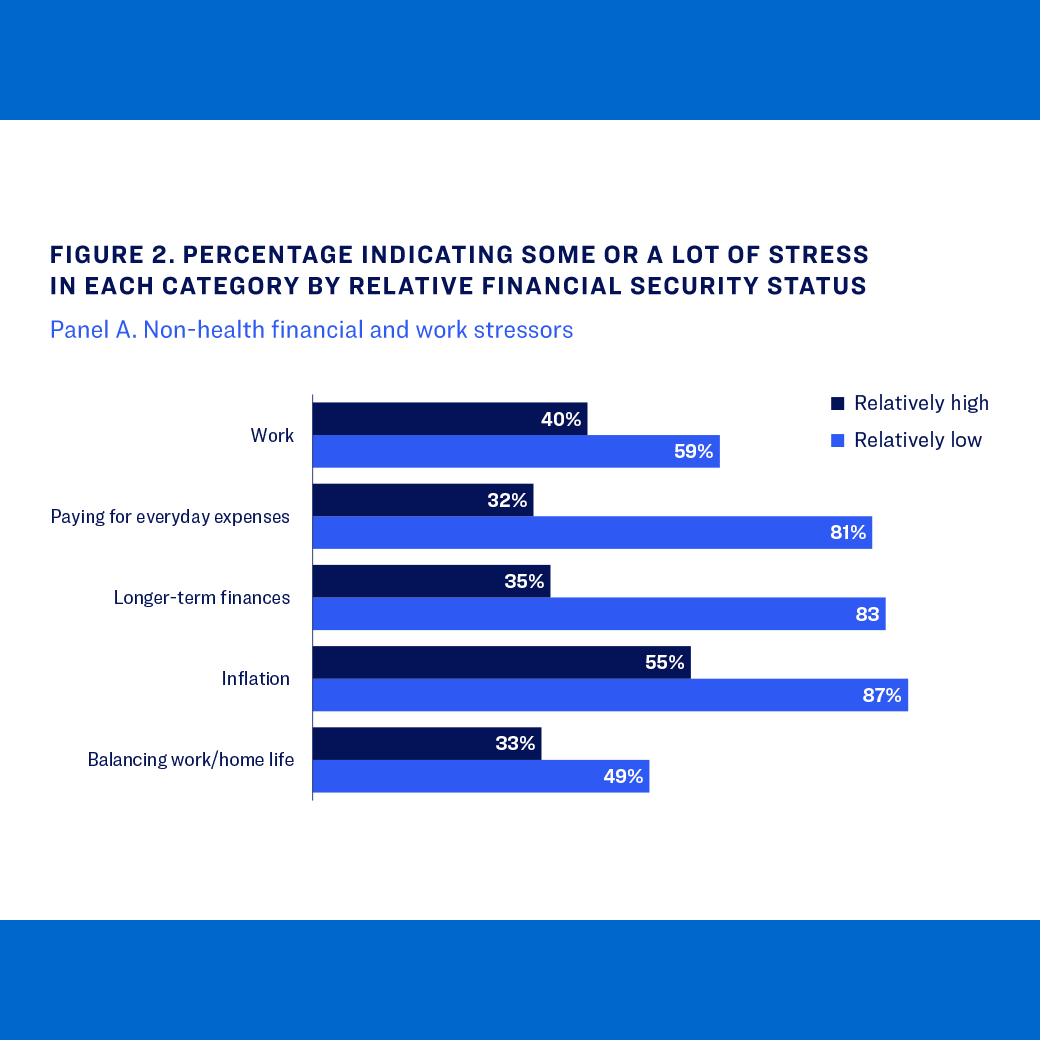Stress can have a negative impact on health outcomes. And while the connection between health and wealth is well known, the relationship between financial security and stress has been less studied.
Summary
Unlike wealth and income, financial security is a broad measure of a person’s financial situation, taking various economic factors into account, and self-reported perceptions of financial security are subjective. Accordingly, households across the income and wealth distribution can exhibit financial insecurity. This study examines how perceptions of financial security vary relative to the incidence and intensity of self-reported stress across 11 categories related to work, finance and health.
Key Insights
- Individuals reporting relatively lower financial security are significantly more likely to report stress across various categories.
- When controlling for financial security, there are limited stress differences between men and women on the extensive margin, with some differences in the intensity of stress reports.
- Financial security doesn’t differ significantly by age, but younger individuals are more likely to report stress with greater intensity.
- Household income has little explanatory power once controlling for financial security.


